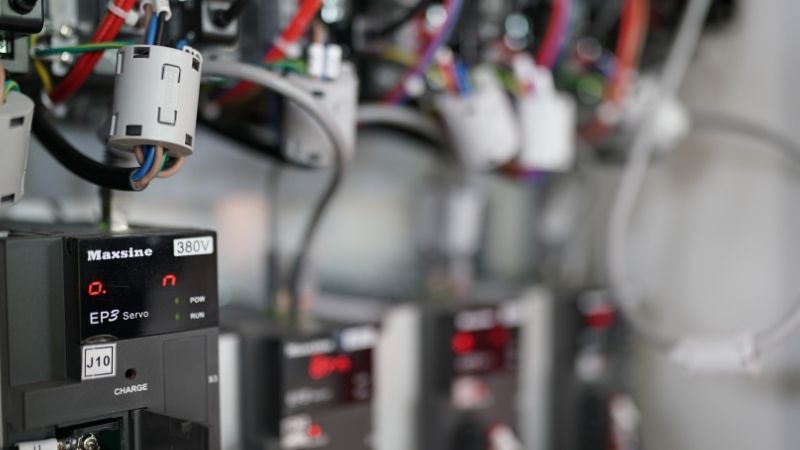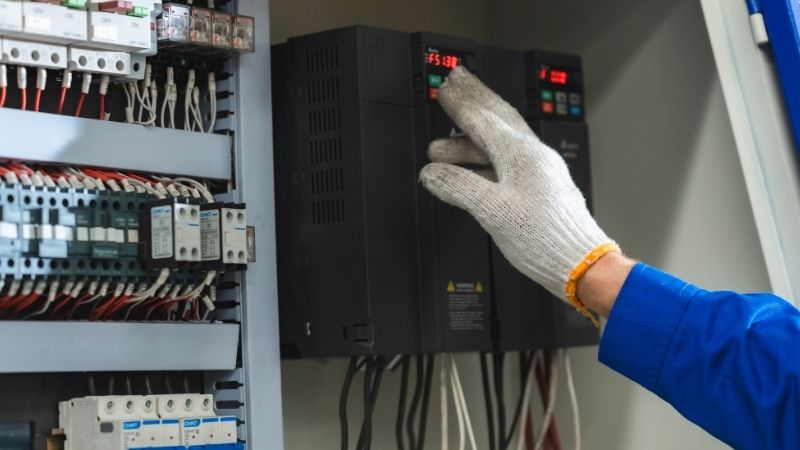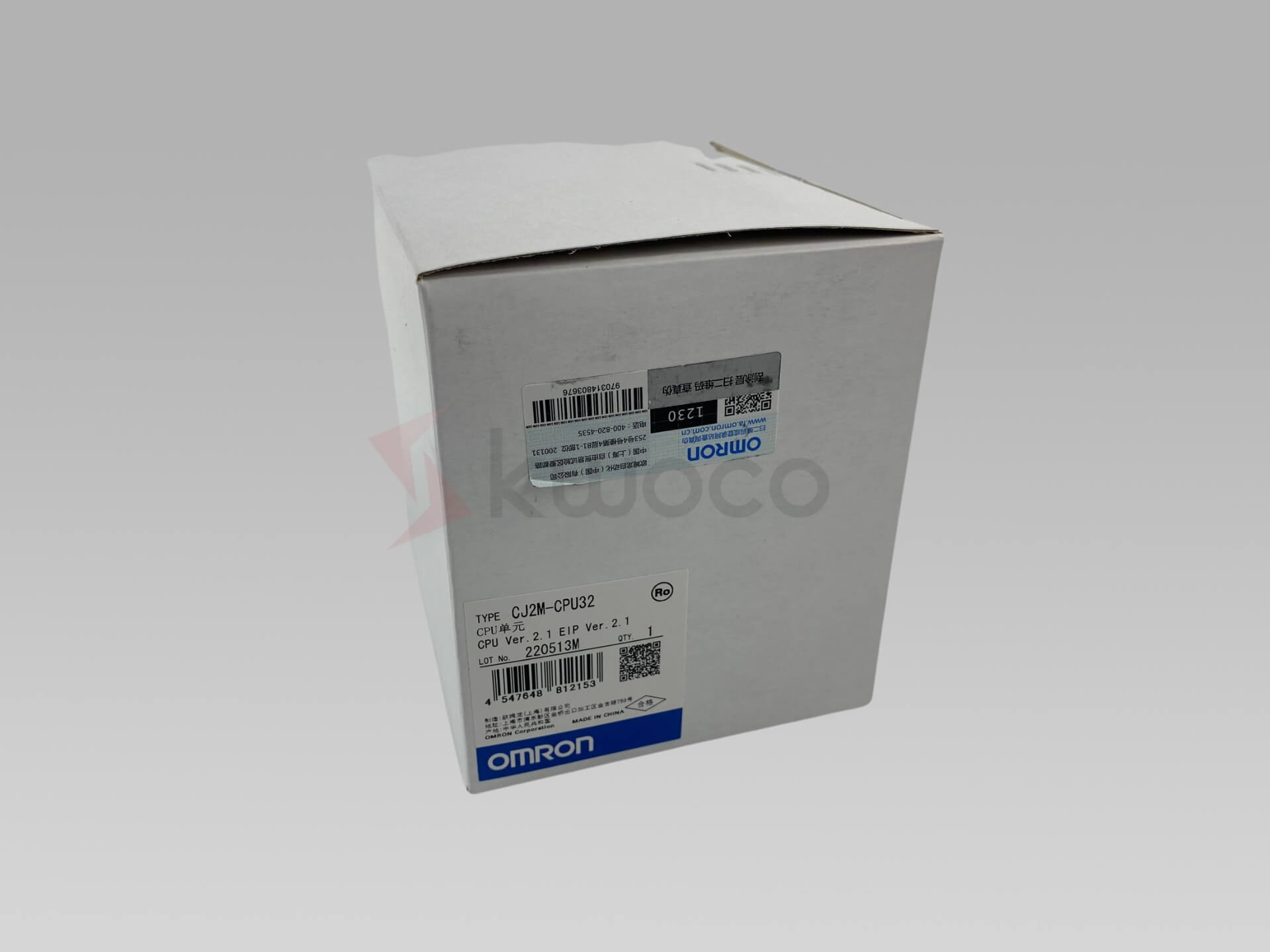Variable Frequency Drives (VFD): Complete Guide to Motor Control
A variable frequency drive (VFD) is an electronic device that controls the speed of an AC motor by varying the frequency and voltage supplied to it. VFDs optimize motor performance, reduce energy consumption, and provide precise speed control for various industrial applications like pumps, fans, and conveyors. By converting fixed-frequency AC power to variable frequency output, VFDs allow motors to operate at different speeds while maintaining efficiency.
Table of Contents
How Do Variable Frequency Drives Work?
The operation of a VFD involves three main stages:
- Rectification: Converts AC input to DC
- DC Bus: Smooths and filters the DC power
- Inversion: Creates variable frequency AC output
A VFD uses pulse width modulation (PWM) and insulated gate bipolar transistors (IGBTs) to control both frequency and voltage. This allows for precise motor speed control while maintaining proper voltage-to-frequency ratio for optimal motor performance.
What Are the Key Benefits of Using VFDs?
Energy Savings
- Reduces energy consumption by 30-50% in typical applications
- Matches motor speed to load requirements
- Eliminates the need for mechanical speed control devices
Improved Process Control
- Provides precise speed control
- Enables soft starting and stopping
- Protects motors from damage
- Allows for programmable acceleration/deceleration
Common Applications and Use Cases for VFDs
VFDs are extensively used in:
- HVAC Systems
- Pump Systems
- Conveyor Systems
- Industrial Fans
- Manufacturing Equipment
How to Select the Right VFD for Your Application?
Choosing the right VFD depends on several factors:
- Motor specifications (voltage, current, horsepower)
- Load characteristics
- Environmental conditions
- Control requirements
- Communication needs
Installation and Maintenance Best Practices
Installation Tips:
- Proper ventilation and cooling
- Appropriate enclosure selection
- Correct cable routing and shielding
- Proper grounding techniques
Maintenance Requirements:
- Regular visual inspections
- Cleaning of heat sinks and fans
- Checking electrical connections
- Monitoring performance parameters
Frequently Asked Questions
With proper maintenance, VFDs can last 15-20 years.
While VFDs work best with three-phase AC motors, they can be used with single-phase motors with proper sizing and configuration.
Common signs include unusual noises, overheating, error codes, and inconsistent motor speed.
Energy savings typically range from 30-50%, but can be higher in certain applications.
Regular cleaning, inspection of components, and monitoring of operating parameters are essential.
Power your projects with brand-new, original Omron, Mitsubishi, Schneider PLC – in stock, ready now!
Conclusion
- VFDs provide efficient motor speed control
- They significantly reduce energy consumption
- Proper selection and installation are crucial
- Regular maintenance ensures long service life
- VFDs improve process control and motor protection
Looking for new, original PLCs for your projects? At Kwoco, we stock the latest PLCs from top brands like Omron, Mitsubishi, and Schneider. Shop with confidence—fast shipping, guaranteed quality! Buy Now
Contact Us
Just fill out your name, email address, and a brief description of your inquiry in this form. We will contact you within 24 hours.
You May Also Find These Topics Interesting
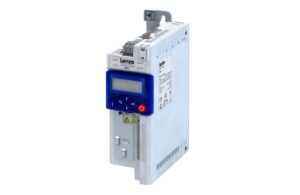
Lenze Drive Error Codes: How to Connect, Operate, and Fix Common Faults
This article provides a comprehensive guide to understanding, troubleshooting, and resolving common fault codes in Lenze drives. If you’re working in industrial automation, particularly with machinery and equipment factories or manufacturing plants, this guide will be an invaluable resource. We delve into the intricacies of Lenze drive error codes, offering practical solutions and expert insights to enhance your operational efficiency and minimize downtime. Understanding these error codes is essential for maintaining the reliability and longevity of your equipment.
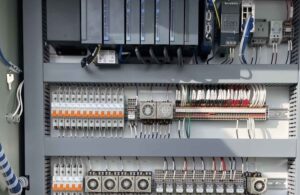
Which PLC is Mostly Used in Industry? Top PLCs Explained
In the ever-evolving automation industry, one question frequently arises: Which Programmable Logic Controller (PLC) is mostly used in industrial applications? Understanding the landscape of PLC manufacturers and their offerings can help professionals make informed decisions for their automation needs. This article explores the most popular PLC brands, their features, and why they dominate the industrial automation sector.

PLC vs PC: Key Differences in Industrial Automation
In the realm of industrial automation, the choice between a Programmable Logic Controller (PLC) and a Personal Computer (PC) can significantly impact operational efficiency and system performance. This article delves into the fundamental differences between these two technologies, helping you make informed decisions for your automation needs.

